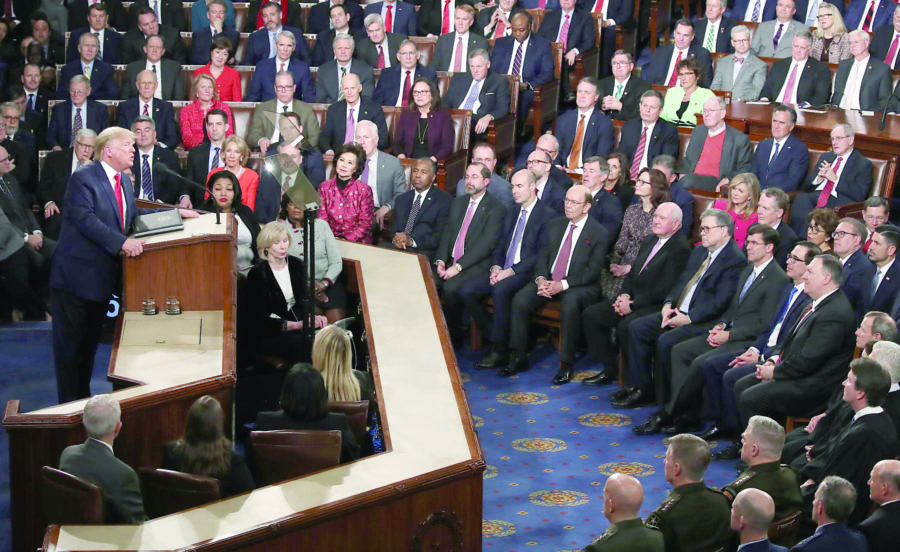If you feel like Congress has become less productive, less functional, and more partisan… you’re right. I’ve been thinking a lot lately about how it’s changed over the years since I served there in the ‘60s to the ‘90s, and several issues help explain why it often struggles to get things done. 
Heightened partisanship may top the list. Congress has always been a partisan organization; we’ve seen tense battles throughout its history. But now they’re more intense and occur more frequently. Members tend to see issues predominantly, though not completely, through a partisan lens.
This is reflected in their voting patterns. In the 1960s and 1970s, votes in which a majority of one party opposed a majority of the other occurred roughly one-third to one-half the time. Starting in the early ‘90s, that percentage rose into the 60 and 70 percent range. Add to this increasingly split control of Congress, with one party controlling the House and the other the Senate, and agreement becomes exceedingly difficult to find.
In many ways, this reflects the country at large. Though identification with a party or as an independent has tended to move a few percentage points over time, Americans of each party seem ever more firmly stuck in their own camps. It has become more difficult to resolve our differences, and this has undoubtedly contributed to congressional gridlock.
Years ago, the question that pervaded discussions on Capitol Hill was, “What can we do to resolve this problem?” Members were unwilling to accept stalemate or lack of agreement. Leaders at the time—people like Carl Albert and Tip O’Neill on the Democrats’ side and Bob Michel and John Anderson on the Republicans’—certainly had partisan differences, but these did not dominate the discussion. Behind closed doors they would discuss them civilly and politely, even going so far as to share private polling numbers.
At the same time that polarization has increased, Congress’s ambition has generally lessened. It’s almost inconceivable today that Congress would tackle a big issue—say, how to provide health care for older people—by trying to create something like Medicare. You see this same trend in oversight of the executive branch. There were committee chairmen who knew the ins and outs of the departments they oversaw down to the finest detail. They would spend days grilling administration witnesses (of even their own party), creating an extensive record of what an administration and its political appointees were trying to accomplish —information that helped ordinary Americans understand and judge the government’s approach. That is much harder to find today.
I think you can also detect the same trend at work in a diminishment of Congress’s oratorical ambitions. There was a time when members of Congress on both sides of the aisle considered Congress to be equal in stature to the President and the executive branch, and their speech-making reflected this: they saw strong oratory as a chance to encapsulate ideas and inspire Americans to rally behind them.
A key thing to remember is that this wasn’t just the speaker of the House or the majority leader of the Senate. Power and influence were spread more widely across both chambers. As the leadership in recent years has come to dominate the process, ordinary members find far fewer chances to shine. The collapse of what was known as the “regular order,” the committee work and amendment process that allowed ordinary members to participate in the deliberative work of Capitol Hill, has thoroughly concentrated power in the hands of leaders and made Congress less representative as a whole.
That trend has been accentuated by the extent to which money now talks at every stage of the process. It’s not just that members are constantly trying to raise campaign funds. It’s that the mix of who funds those campaigns has changed dramatically. In the late 1970s, according to the Brookings Institution’s Vital Statistics on Congress, labor and corporate PACs gave about equally. Now, corporate PACs account for the vast majority of all the money flowing to members’ campaigns.
The result of all this? Congress is still a vital part of our democracy, but it is by most measures a less effective one.
Lee Hamilton is a Senior Advisor for the Indiana University Center on Representative Government; a Distinguished Scholar at the IU Hamilton Lugar School of Global and International Studies; and a Professor of Practice at the IU O’Neill School of Public and Environmental Affairs. He was a member of the U.S. House of Representatives for 34 years.
“Like” us on Facebook at “Indiana University Center on Representative Government,” and share our postings with your friends.

